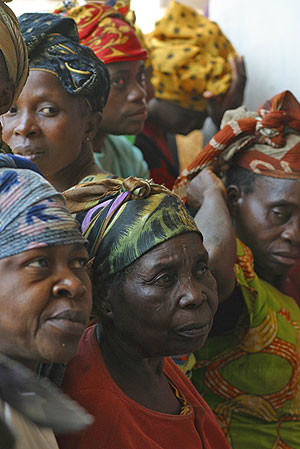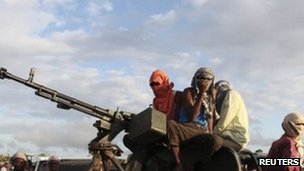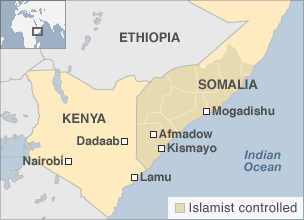Written by Sonia Randhawa and reposted from GenderIT.org.
 Access to knowledge is vital at any time. This is especially evident in times of emergency where a lack of knowledge can be disastrous, as graphically illustrated during the Asian tsunami of 2004 when meteorological services were aware of an impending disaster, but were unable to find channels of communication to warn affected communities. Also graphic in this instance was the gendered nature of the disaster – in Aceh, up to 80% of those killed by the tsunami were women. Reasons given for this range from the nature of women’s clothing, that women were more likely to be at home at the time of the tsunami and that women were more likely to put the safety of their children before their own safety.
Access to knowledge is vital at any time. This is especially evident in times of emergency where a lack of knowledge can be disastrous, as graphically illustrated during the Asian tsunami of 2004 when meteorological services were aware of an impending disaster, but were unable to find channels of communication to warn affected communities. Also graphic in this instance was the gendered nature of the disaster – in Aceh, up to 80% of those killed by the tsunami were women. Reasons given for this range from the nature of women’s clothing, that women were more likely to be at home at the time of the tsunami and that women were more likely to put the safety of their children before their own safety.
This is not an isolated case. Natural disaster statistics are rarely disaggregated by gender, although anecdotal evidence suggests that women are disproportionately affected. In addition, analysts argue that disasters occur by design and that the impact of natural disasters shows a bias towards the socially excluded. According to Elaine Emerson:
“On balance, those most socially excluded and economically insecure in any society or
community are least able to access or control resources needed during and in the aftermath of a
damaging cyclone or lengthy drought. Women, the frail elderly and children, members of
subordinated cultural or racial groups, the chronically ill, undocumented residents, the pre-disaster
homeless, and other socially marginalized populations are least likely to have the social power,
economic resources, and physical capacities needed to anticipate, survive, and recover from the
effects of massive floods, long-lasting drought, volcanic eruptions, and other extreme environmental events.”
This has led to aid and relief agencies such as Oxfam attempting to counter previous gender-blind policies that worsened the impact of disasters on women. The lack of gender disaggregated informationi on the impact of natural disasters is a key problem in addressing the gendered nature of their impacts.
This article will compare two very different situations, that of a comparatively developed nation in the Middle East and a nation that has been ravaged by over a decade of civil strife and war. Jordan in the Middle East has one of the lowest interneti penetration rates in the region, but almost a fifth of people have internet access. The GDP per capita, in purchasing power parity of Jordan is over 10 times that of DRC.
The Democratic Republic of Congo has an average life expectancy of just 45 and internet penetration of under 2 percent. While urban areas are relatively safe from conflict, over 2 million people have been displaced in the Eastern part of the nation, and violence continues to claim around 1,200 people per day, either directly in conflict, or indirectly through deaths due to a lack of clean drinking water or other easily avoidable health problems.
The similarities between Jordan and the DRC are few. But in both societies the status of women remains low, when compared with other countries in the region, and internationally. The Global Gender Gap Report 2006 ranked Jordan as 105th out of 115 countries in terms of closing its gender gap in economic participation and opportunities, while there are few Jordanian women in leadership positions in either politics or business, the number of Jordanian women enrolled in ICT courses has outstripped men, since the mid-00s. Nevertheless, and despite the Governmenti‘s key role in ICT policyi, women make up less than a fifth of the core ICT workforce.
One of the main problems women have in accessing knowledge is directly related to poverty and illiteracy. In both countries, the interviewees said the problem of access to knowledge in an emergency situation is only part of a general problem of women’s access to knowledge – although women’s literacy rates in Jordan are among the highest in a highly literate region.
This is further worsened when it comes to issues of sexual and reproductive health due to cultural taboos surrounding the discussion of sexual violence – issues that are particularly crucial in DRC where sexual violence is increasingly seen as an acceptable method of subduing one’s perceived cultural or racial enemies. In one month in 2008, 1,200 women were reported to have been raped.
Literacy and education
The main problems facing women who need to access information in an emergency situation are those they are faced with daily. Key among these is low levels of literacy. While in the short-term, such as in a natural disaster, word of mouth or radio are usually key providers of information; in the aftermath a lack of literacy can severely hamper women’s ability to respond to situations or absorb new information quickly and effectively.
This is related to women’s access to education. In DRC, there are few women who attend university, and it is seen as an impediment to making a good marriage – educated men prefer wives with little education, according to Lulu Mitshabu. There are few educated role models for women to emulate, either in government or private enterprise, and if a family has the choice between spending resources to educate a boy child or a girl child, the boy child will receive preference. In conflict areas, children of both sexes are faced with the problem of losing several years education due to displacement, and there are few facilities to help those in such a situation – the already over-stretched aid agencies are concentrating on ensuring the short-term survival of the refugees. Considering both the long-term nature of the conflict and that there are no apparent solutions in sight, this problem is acute. Ms Mitshabu also says that the impact of this on access to knowledge is disastrous – not only are children unable to read or write, this also hampers their ability to assess information, making them vulnerable to manipulation, particularly dangerous in a conflict that is fuelled by racial tensions.
In contrast, women’s access to education in Jordan is comprehensive. There are more girls enrolled in primary school and secondary school. Yet, according to Daoud Kuttab, this disguises regional (and generational) differences in literacy and access to knowledge. And while Jordan has made vocal commitments to ensuring that it is considered a prime destination for ICT investors, particularly those looking at outsourcing operations, there was nothing that specifically addressed gender inequities in ICT access until May 2007. The new policy says “Government notes the importance of the ICT sector with respect to women’s role in Jordanian society and the Jordanian economy. Accordingly, Government will work with stakeholders to ensure the continuous promotion of women’s participation in the IT sector through the support of women’s empowerment.”
This does not mention any specific commitment to not only ensuring women have access to ICT education, but also that there are appropriate job opportunities for them once they leave tertiary education.
Infrastucture
In both Jordan and DRC, a lack of infrastructure was seen as a key impediment to the generalised lack of information dissemination. In DRC, for example, in the earlier days of the conflict, one of the key means of transmitting information was via community radio. Community radio was key in informing people of possible attacks and in providing information on rehabilitation after attacks.
In addition, the ability of people to receive radio signals has been severely eroded. Many refugees have been forced to flee their homes repeatedly. In many instances, a person with a radio may become a hub for a community anxious to learn news.
Lulu Mitshabu says that community radio was particularly important to women, as it was not only more interested in the concerns of women than statei-sponsored media, it gave women a chance to be heard on radio. This was an effective means of empowering women, and helping women leaders in the community to spread information. However, given the scarcity both of transmitters and receivers, this is no longer an effective means of transmitting information.
Even less effective is internet and computer technology – even in the comparatively developed state of Jordan. In both countries, the technology is confined to an urban elite. In DRC, single women may access the internet through cafes, mainly to communicate with relatives overseas – but even this is curtailed by their husbands once they are married. In both countries, access to the internet in remote areas, and in DRC in the conflict areas, is severely limited, both by the infrastructure and by the levels of computer and internet literacy.
It is an area of policy development that has been lacking, not just in Jordan but in the region. While Jordan both hosted the World Association of Community Radio Broadcasters (AMARC)’s Ninth General Assembly and has approved community radio licences within university campuses, AMARC has recommended improving legislation to allow more community radio licences. Daoud Kuttab says it is the best way to help women take control of information, “A community radio station in Jordan is the perfect communication tool that will provide people of all ages and social backgrounds of vital information that they need whether it be related to daily needs or farming needs.”
Credibility of information
In DRC, the ability to disseminate vital information rapidly is also hampered by the skepticism of recipients of information. Having been victims of conflict for over a decade, people will only believe information from trusted sources, often those known to them personally such as village chiefs. Women’s subordinate position in society and their lack of education can limit their effectiveness as providers of information, reinforcing men in their position as gatekeepers of information.
This tendency for men to be gatekeepers is a situation that has been worsened in the conflict years in DRC. This in turn means that information that could save women’s lives, such as simple information on hygiene and health-care, is often not transmitted to the women who need it, as men do not see the transmission of this information to women as being important.
However, when educated women return to their villages, they can play this role – but few choose to do so. According to Lulu Mitshabu, this is partly because of the limited opportunities at the village level and partly due to migration of educated women overseas, where they are more likely to find educated marriage partners and greater opportunities.
Effective Technology
Unfortunately, the experience in DRC seems to indicate that all effective means of accessing knowledge are controlled by men. In Ms Mitshabu’s experience there are two major effective ways of communication, that can help in disaster preparedness and recovery. The first is mobile phone technology. The infrastructure for mobile phones is difficult to target, and has been largely unaffected by the conflict. SMS messages can be used to effectively disseminate information to a large audience in a short period of time. Unfortunately, mobile phones are largely the province of the men. There is no perceived need for women to own a mobile phone, and even if they did, the low literacy rates make SMS services largely useless.
The second way of effectively transmitting information is through traditional leadership roles – chiefs spreading information on how to deal with potential or existing threats. Once again, this largely excludes women from a role in either disseminating or receiving information. However, it is useful in ensuring that information transmitted is perceived as credible. This is also a network that has proved resilient in the face of conflict. It has the major downside of reinforcing existing gender roles.
Ways forward
In Jordan, where the Government is behind an initiative to put a computer in every home, emphasis needs to be given to making sure relevant information is available and to improve women’s computer literacy. However, Daoud Kuttab emphasises that this is not enough. He says, “Women need to take charge of the entire informational cycle that affects them from the source of information to the platforms that are available in which women are in editorial and senior managerial positions as well as ownership in the case of community media.”
He also points out the need to undo the impact of the filtering process of the male-dominated media and policy.
In DRC, Lulu Mitshabu says the need is to focus on low-tech solutions to disseminating knowledge, such as using posters and t-shirts. These need to be highly pictoral to ensure that they are effective regardless of literacy rates. In terms of emergency information, she stresses the need to set up parallel structures to mirror the informal networks that exist among men, helping to cultivate leadership among women and to encourage educated women to return to their communities to take up a leadership role. The main problem in the DRC remains not just that aid is provided in a gender-blind fashion, but also that there is not enough aid to provide for the humanitarian disaster of the region.












 Access to knowledge is vital at any time. This is especially evident in times of emergency where a lack of knowledge can be disastrous, as graphically illustrated during the Asian tsunami of 2004 when meteorological services were aware of an impending disaster, but were unable to find channels of communication to warn affected communities. Also graphic in this instance was the gendered nature of the disaster – in Aceh, up to 80% of those killed by the tsunami were women. Reasons given for this range from the nature of women’s clothing, that women were more likely to be at home at the time of the tsunami and that women were more likely to put the safety of their children before their own safety.
Access to knowledge is vital at any time. This is especially evident in times of emergency where a lack of knowledge can be disastrous, as graphically illustrated during the Asian tsunami of 2004 when meteorological services were aware of an impending disaster, but were unable to find channels of communication to warn affected communities. Also graphic in this instance was the gendered nature of the disaster – in Aceh, up to 80% of those killed by the tsunami were women. Reasons given for this range from the nature of women’s clothing, that women were more likely to be at home at the time of the tsunami and that women were more likely to put the safety of their children before their own safety.





































